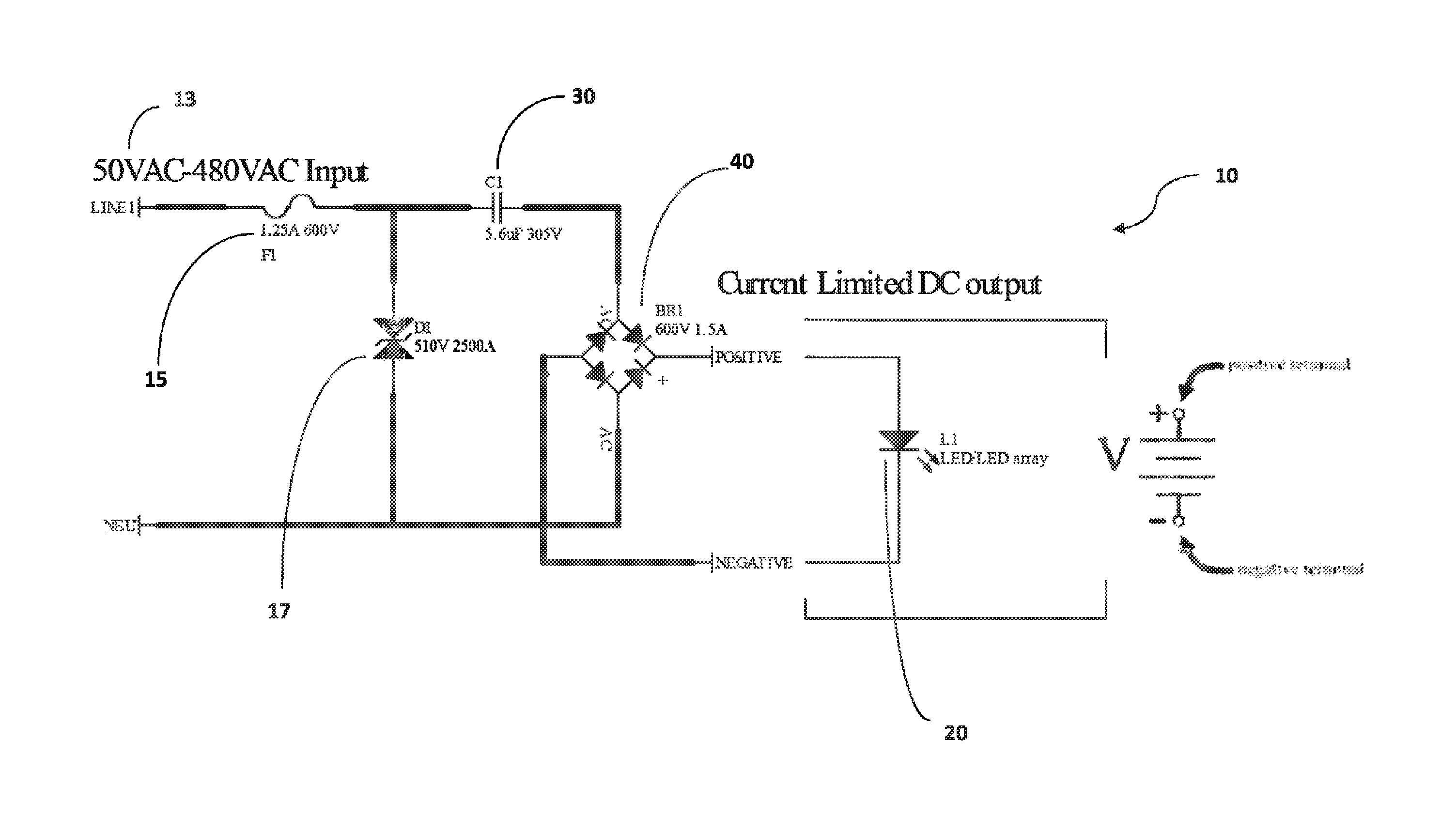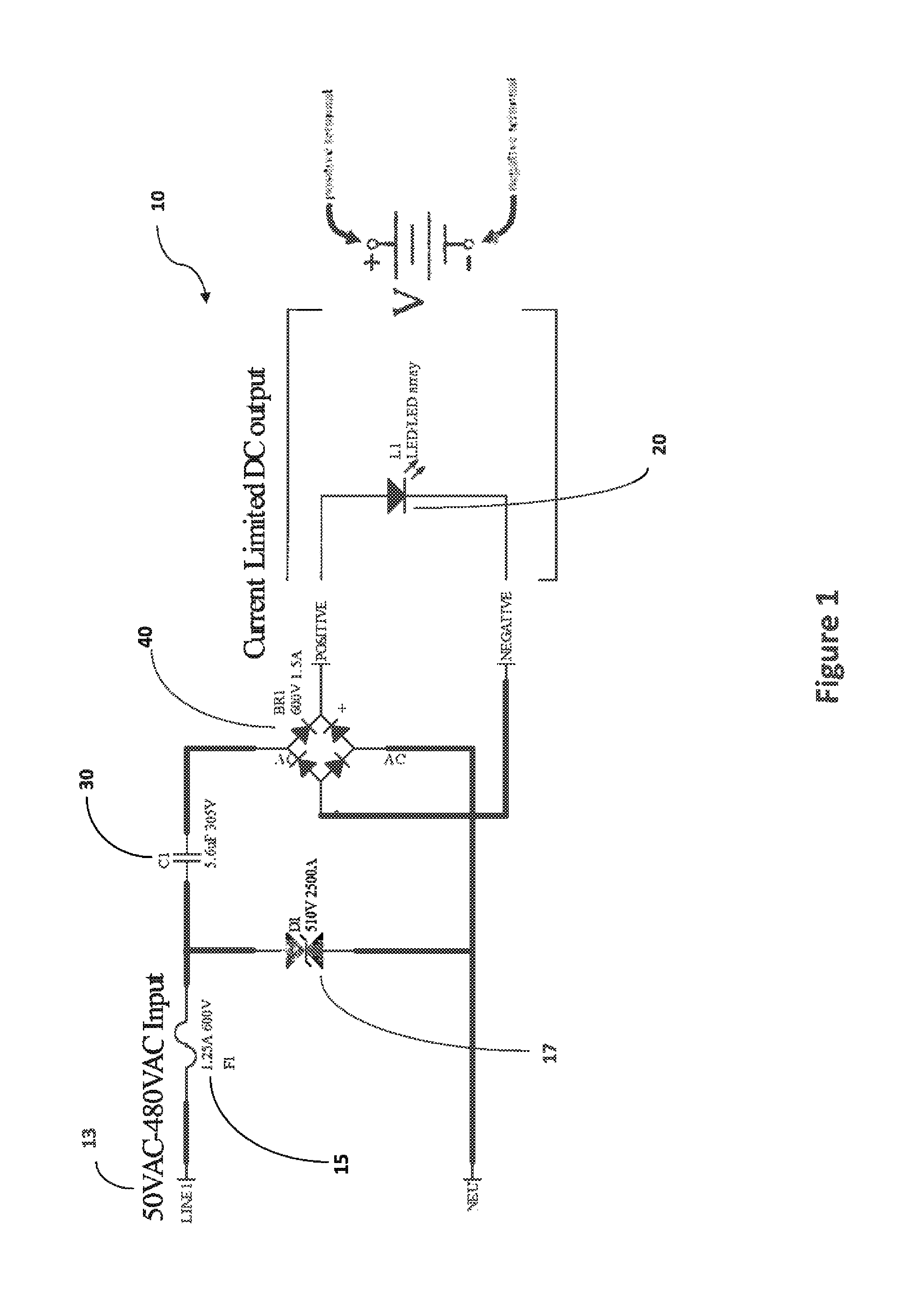Reactive power balancing current limited power supply for driving floating DC loads
a technology of reactive power balancing and power supply, which is applied in the direction of transmission systems, electric signal transmission systems, semiconductor lamp usage, etc., can solve the problems of deviating from the ideal “resistive” load, unable to work directly with ac power, and requiring dc power for solid-state devices and batteries, etc., to improve the reactive power balance of local premises and/or local grid, improve the power quality of the electrical grid, and improve power supply efficiency
- Summary
- Abstract
- Description
- Claims
- Application Information
AI Technical Summary
Benefits of technology
Problems solved by technology
Method used
Image
Examples
Embodiment Construction
[0052]The present invention is directed to a reactive power balancing current limited power supply (RPBCLPS) for driving floating DC loads, such as for LED lighting, battery charging stations, and other applications which involve converting high voltage AC power to low voltage DC power for loads that require limited current. More in particular, the invention is directed to a power supply which utilizes capacitive reactance to limit the current being supplied to the load, rather than inductance. Accordingly, the present invention provides improved power supply efficiency, limits surge when first powered, improves reactive power balance of the local premises and / or local grid, improves power quality of the electrical grid, and reduces EMI present on the grid.
[0053]As schematically represented in the circuit diagram of FIG. 1, one embodiment of the present invention is shown, namely, a capacitance based reactive power balancing current limited power supply (“RPBCLPS”) 10 for driving an...
PUM
 Login to View More
Login to View More Abstract
Description
Claims
Application Information
 Login to View More
Login to View More - R&D
- Intellectual Property
- Life Sciences
- Materials
- Tech Scout
- Unparalleled Data Quality
- Higher Quality Content
- 60% Fewer Hallucinations
Browse by: Latest US Patents, China's latest patents, Technical Efficacy Thesaurus, Application Domain, Technology Topic, Popular Technical Reports.
© 2025 PatSnap. All rights reserved.Legal|Privacy policy|Modern Slavery Act Transparency Statement|Sitemap|About US| Contact US: help@patsnap.com



